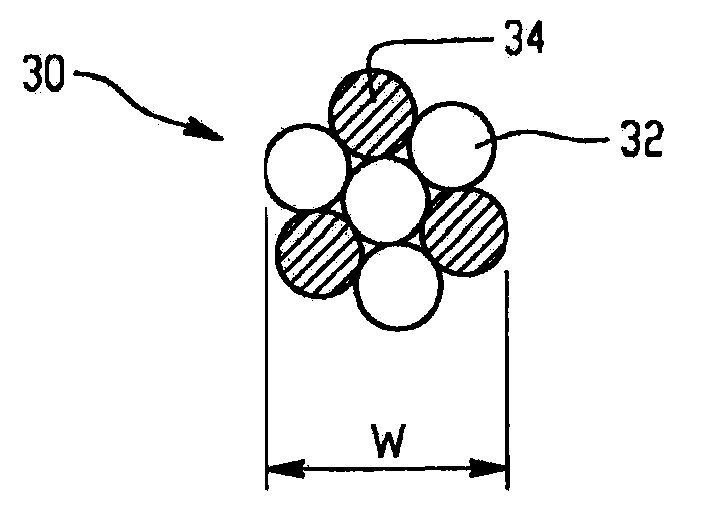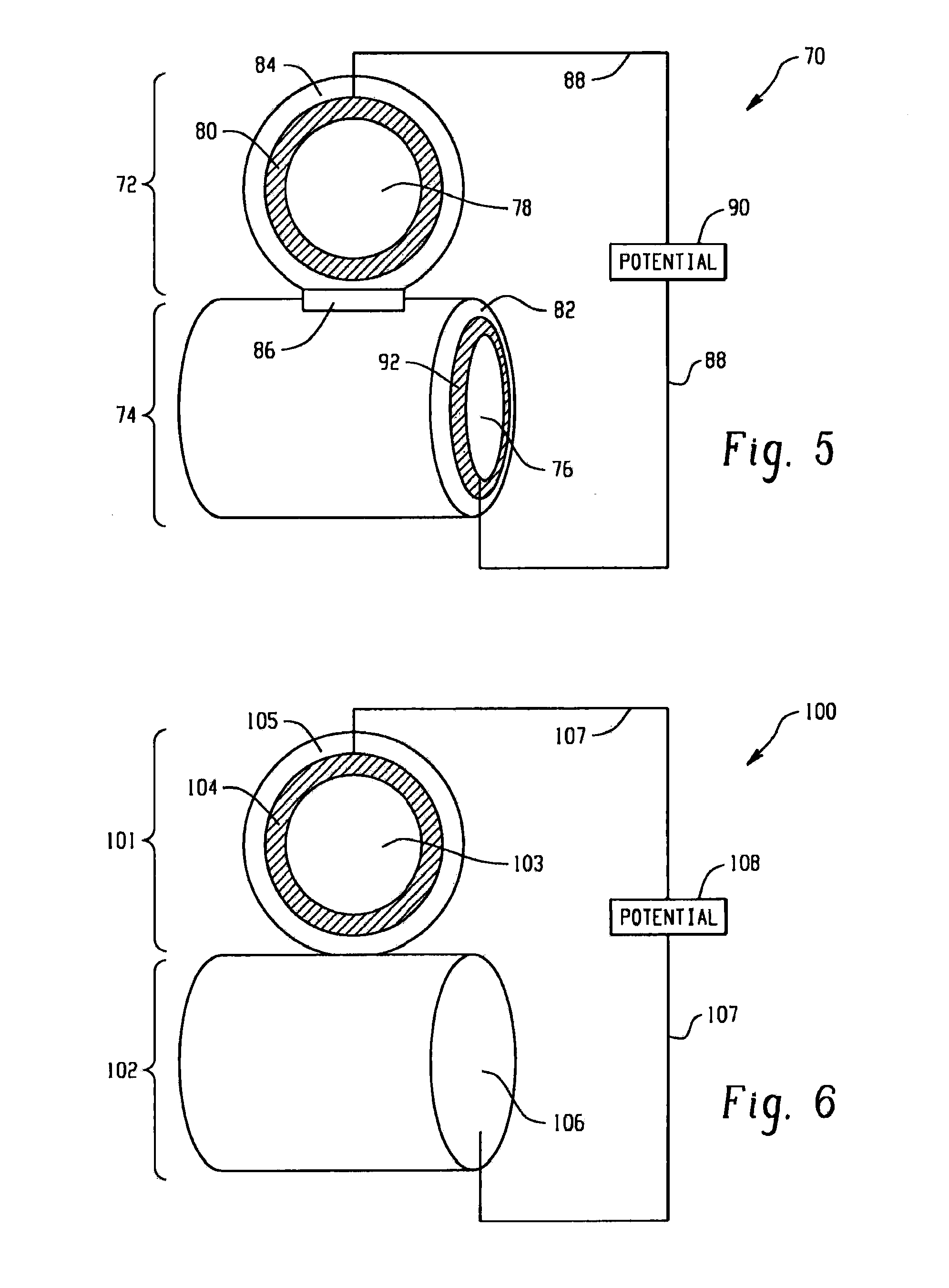Flexible Electrochromic Devices, Electrodes Therefor, And Methods of Manufacture
a flexible electrochromic and electrode technology, applied in the field of electrochromic devices and electrodes therefor, can solve the problems of low conductivity value, high cost, and lower flexibility of pedot-pss, and achieve the effect of reducing the conductivity value compared to ito
- Summary
- Abstract
- Description
- Claims
- Application Information
AI Technical Summary
Benefits of technology
Problems solved by technology
Method used
Image
Examples
example 1
[0093]This example demonstrates a two-layered electrochromic device comprising flexible electrochromic fabric electrodes.
[0094]A gel precursor mixture was prepared by combining polyethylene glycol diacrylate (PEG-DA), propylene carbonate (5 g each), 1 g lithium trifluoromethane sulfonate (LITRIF or lithium triflate), and 20 mg of 2,2-dimethoxy phenylacetophenone (DMPAP) as photoinitiator for the curing of the electrolyte into a gel.
[0095]Two pieces of wire mesh fabric, 1 cm by 2 cm in dimension (woven Inox fiber obtained from ITP) were separately spray-coated with BEDOT-T silylene precursor on both sides of the fabric from a 0.1 wt. % solution in dichloromethane, using an Iwata spray coating apparatus. The precursor was then converted to electrochromic polymer using electrochemical oxidation by dipping the fabric into electrolyte solution as described above and applying a potential sufficient enough to oxidize the BEDOT-T silylene precursor. Then, one piece of fabric was placed onto...
example 2
[0097]This example describes a method for the preparation of conductive fabric using an aqueous PEDOT-PSS polymer dispersion (commercially available from Agfa under the trade name Orgacon™). In this example, a spandex fabric from Lubrizol was used, although other forms of spandex, cotton, and other fabric-like materials are amenable to the same procedure and may yield similar conductance.
[0098]The spandex fabric sample was immersed in an aqueous dispersion of PEDOT-PSS. Alternatively, the aqueous dispersion could be spray coated or drop cast onto the fabric. The coated spandex fabric was allowed to air dry. The originally white fabric was now a light blue and electrically conductive. The material was fully flexible, stretchable, and deformable and retains its conductivity after such deformation. The material does not appear white after stretching, indicating that the PEDOT-PSS conducting polymer has been incorporated into the strands of the fabric itself and is not merely coated on ...
PUM
| Property | Measurement | Unit |
|---|---|---|
| diameter | aaaaa | aaaaa |
| diameter | aaaaa | aaaaa |
| circular diameter | aaaaa | aaaaa |
Abstract
Description
Claims
Application Information
 Login to View More
Login to View More - R&D
- Intellectual Property
- Life Sciences
- Materials
- Tech Scout
- Unparalleled Data Quality
- Higher Quality Content
- 60% Fewer Hallucinations
Browse by: Latest US Patents, China's latest patents, Technical Efficacy Thesaurus, Application Domain, Technology Topic, Popular Technical Reports.
© 2025 PatSnap. All rights reserved.Legal|Privacy policy|Modern Slavery Act Transparency Statement|Sitemap|About US| Contact US: help@patsnap.com



